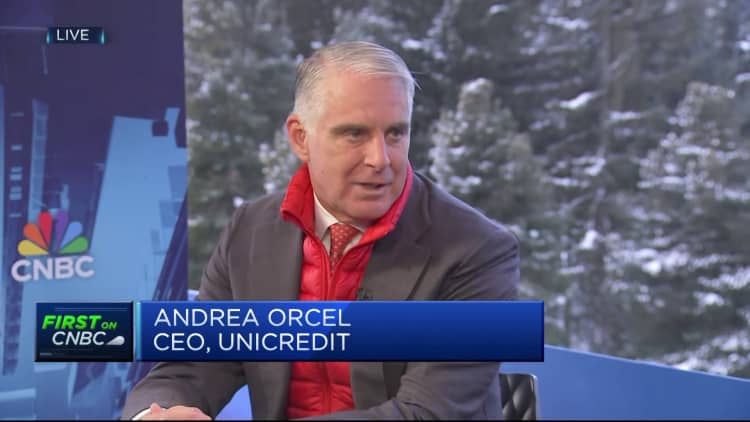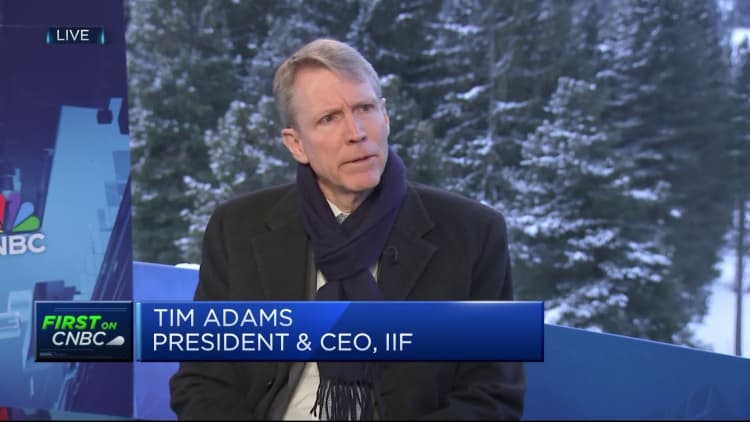
A trader works on the trading floor at the New York Stock Exchange (NYSE), January 5, 2023.
Andrew Kelly | Reuters
U.S. stocks have fallen far short of their global peers over the past three months, a rarity in recent years, and analysts expect this divergence to widen over the course of 2023.
As of Tuesday morning, the Russell 3000 benchmark for the entire U.S. stock market was up by 6.3% over the three-month period since October 24, while the S&P 500 was up 4.62%.
By contrast, the MSCI World ex-U.S. index had surged by more than 22%, while the pan-European Stoxx 600 was up more than 13%.
Weaker U.S. retail sales and industrial production figures last week cemented the view that the U.S. economy is slowing, while the growth picture in Europe, Asia and various emerging markets has improved notably.
In a research note Friday, Barclays European equity strategists highlighted that activity momentum in Europe and the U.S. is decoupling, which is “unusual,” with positive data surprises in Europe such as a rebound in PMI (purchasing managers’ index) and ZEW economic sentiment readings.
Unseasonably warm weather in northern Europe and the faster-than-expected Covid-19 reopening in China have offered relief to the European outlook, even if many economists still expect a mild recession.
Comparison chart of U.S. stocks versus European and global peers.
Meanwhile, the opposite is unfolding stateside, where data indicates a sharper slowdown but inflation has also shown signs of a sustained downward trend, leading markets to hope for an end to the Federal Reserve‘s aggressive interest rate-hiking cycle.
“In the past two months or so, equities and bonds have both cheered the early signs of disinflation and softening growth, as they reinforced the peak rates narrative, but the ‘bad data is good news for equities’ mantra seems over now in the U.S.,” Barclays strategists said.
“The rally is losing steam in equities, while it is gathering pace in bonds. This is starting to resemble a classic recession playbook, with investors selling equities to buy bonds.”

By contrast, Europe appears to be in a “sweet spot” right now, the British bank believes, with disinflation hopes pushing yields lower and economic sentiment receiving a boost from falling energy prices and China’s reopening, pushing up stocks.
“We started the year [overweight] Europe vs. U.S. and think the former offers better value, the potential to see flows reallocated towards the region, and arguably more positive growth risks, at least short term,” said Barclays Head of European Equity Strategy Emmanuel Cau.
“However, if the macro situation in the U.S. were to deteriorate more, history suggests the decoupling between the two markets may not last long.”
Stephen Isaacs, chairman of the investment committee at Alvine Capital, told CNBC on Monday that central to Europe’s resurgence versus the U.S. was the diminishing fear that energy prices would stay high, or perhaps spiral out of control.

This was borne out in recent portfolio flows data released by French bank BNP Paribas, which showed that as gas prices declined, foreign investors returned to euro zone stocks in October and November for the first time since February 2022.
Isaacs also noted that although the conversation around higher interest rates usually focuses on the negative implications for economic growth, they also mean savers are generating income.
“Where do we find most savers in broad terms? Places like Germany, northern Europe, so I think these again are some of the little factors people have forgotten,” he said.
“Tourism, again, a big plus for Europe, and then finally the fact that European assets have been undervalued and under owned for some time.”

Although the performance gap between Europe and the U.S. had grown considerably in recent years, Isaacs suggested that the U.S. market’s orientation toward large cap growth stocks and tech compared to the makeup of many European markets — which are more heavily weighted in consumer staples, financials and other value stocks — means the tide is turning.
“I do think that in Europe, areas like financial services, European banks are still trading at big discounts to book value, so there’s some obvious discounts, obvious value there,” he added.
While market bets are increasing for the Fed to end its tightening cycle soon, and possibly even begin to cut rates by the end of the year in the face of sluggish growth and falling inflation, the European Central Bank is expected to remain hawkish, with the bank guiding for a terminal policy rate of 3.5-4%.
